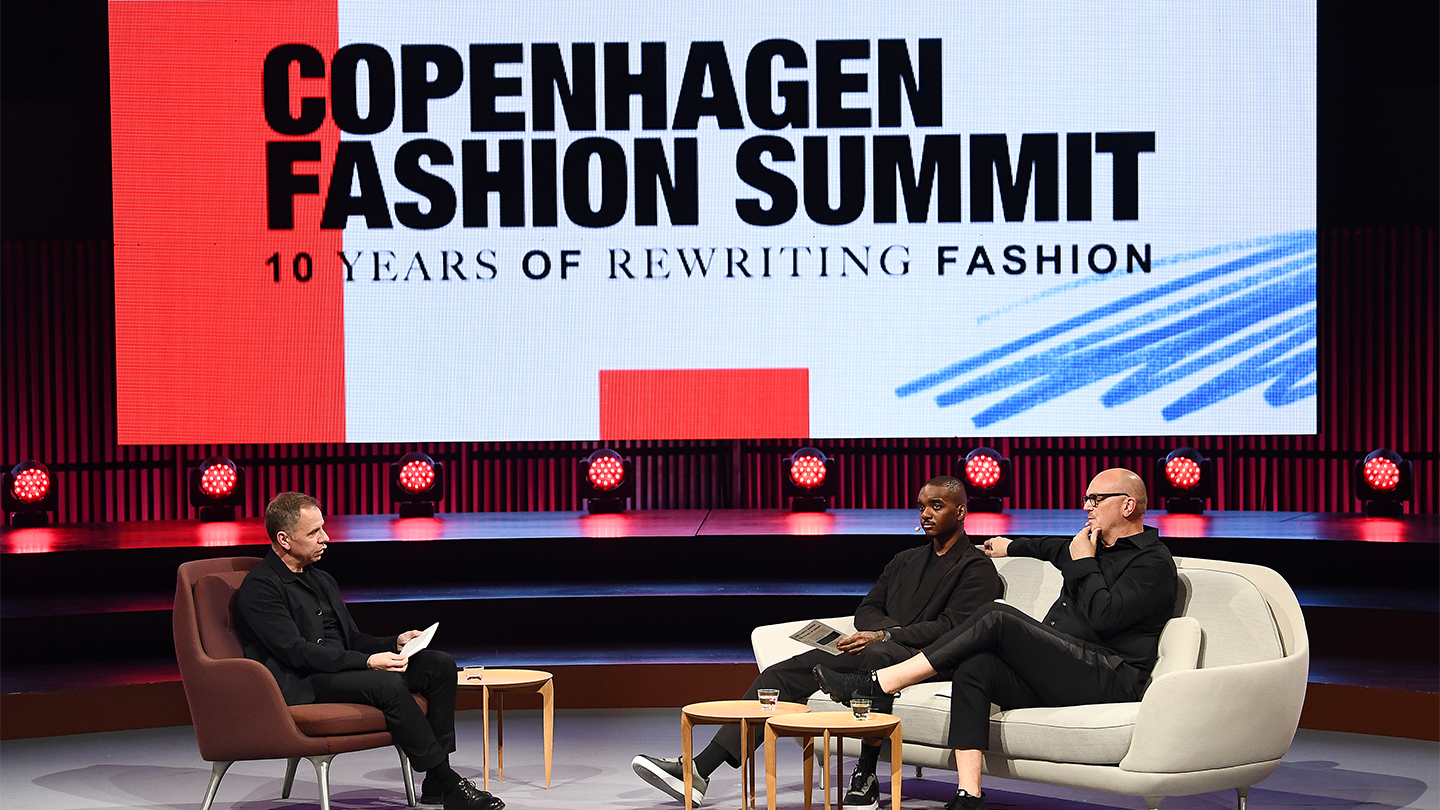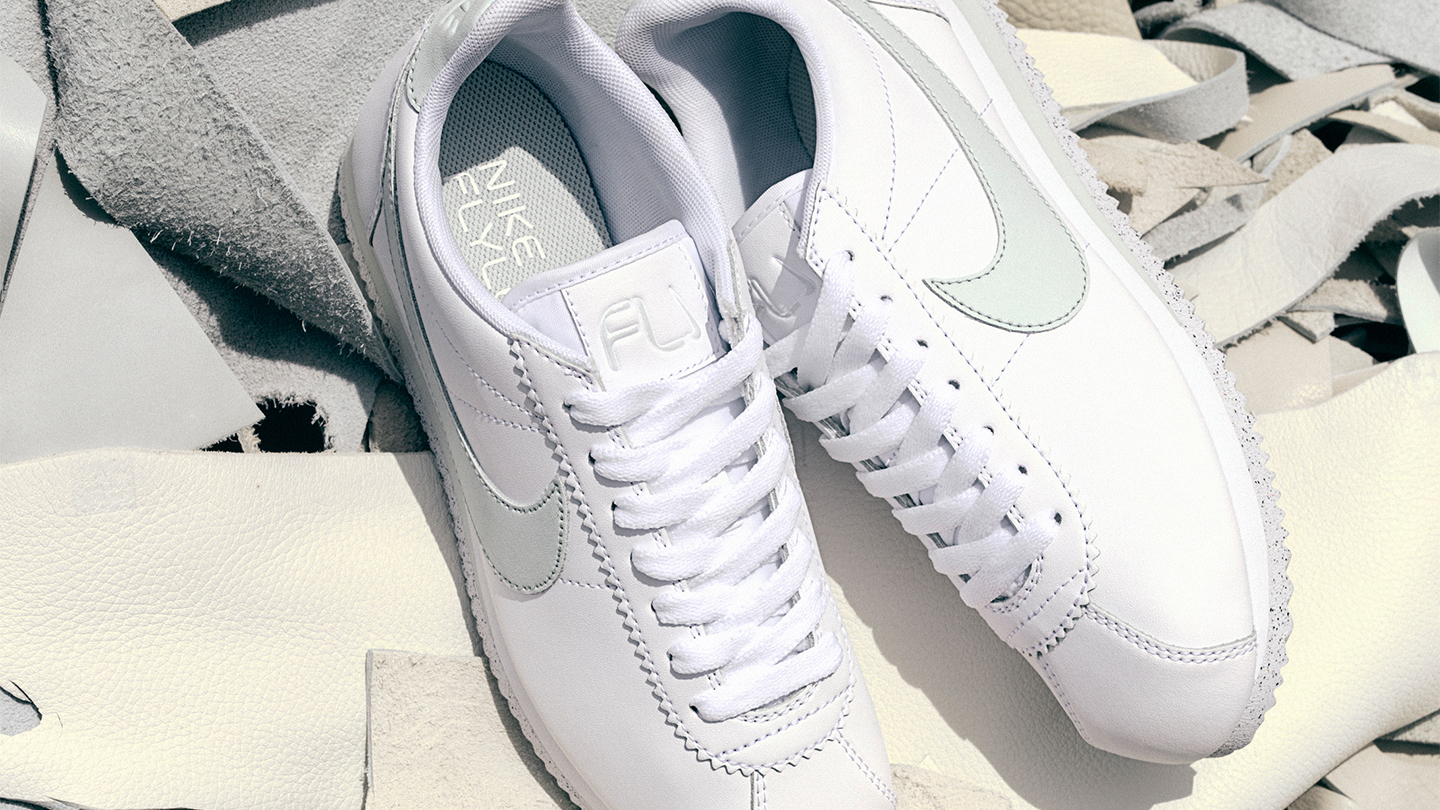“Given the existential threat we face, no single brand is going to solve the climate crisis on their own,” Noel Kinder, Nike’s chief sustainability officer, tells i-D. We’re speaking to the sportswear behemoth as it launches its a new manual, Circularity: Guiding the Future of Design, at the 10th anniversary edition of the Copenhagen Fashion Summit. “Where we can help is open source examples of what we’ve learned over the last 25 years, pull in examples from other innovative brands and make it a collaborative effort, where together, we can codify the best practices and push on together,” he adds. “That’s where we are as an industry. François-Henri [Pinault, CEO of Kering] said the same earlier at this conference, we can’t solve the emergency as individuals.”
As The Guardian changes the language it uses for our terminally ill environment, it’s becoming clearer and clearer that this is an emergency and real action is needed. That’s where Nike’s new guide comes in. Inspired by Global Fashion Agenda and made in partnership with the staff and students of Central Saint Martins, this guide and its related workbook shares 10 sustainable design principles that support a universal call to action for our industry.
“We know what it takes to be more circular, renewable, and how to communicate all of this to consumers, but it’s not enough,” says Noel. “Having strong voices that are out there leading and inspiring the next generation is what’s needed and we have a great opportunity to inspire people to do things differently. When we’ve shared our learnings before, you can see the lightbulbs switch on when you spend time with people in design school, emerging and established design talents alike.”
Nike’s downloadable guide is about powering more lightbulb moments (using renewable energy, of course). “This is the beginning of the conversation and we want it to be an industry-wide collaboration,” he adds. Ultimately, it’s another step in a long journey and a nudge that we all need to get a move on.
So what is it? “Ultimately, it’s a workbook that details ten principles,” Noel says in summary. These are: materials, recyclability, waste avoidance, disassembly, green chemistry, refurbishment, versatility, durability, packaging, and new models. The guide looks beyond the talents of the Kitchen, Nike’s possibility-pushing R&D laboratory, by bringing in examples from the likes of Patagonia, Raeburn, Fjallraven, Levi’s, and many more. While it compiles these innovators together, it’s bigger aim is to ignite the design daydreams of tomorrow’s more responsible designers and brands.

“We have an obligation to consider the complete design solution, inclusive of how we source it, make it, use it, return it and, ultimately, how we reimagine it,” John Hoke, Nike’s Chief Design Officer, explained during the guide’s launch at the summit. “This is an invitation for a dialogue with creative groups around the world. Students from CSM and A-COLD-WALL’s Samuel Ross, a regular Nike collaborator, have trialled the guide. “With Central Saint Martins, we wanted to facilitate and encourage the minds who will be shaping the future of fashion by utilising processes at the forefront of innovation,” Samuel told us. “It’s about attacking a problem as equals,” John added.
Well, at CSM, as they would have done at most fashion colleges around the world, Nike encountered a new generation of students intent on fashioning a better future. They are citizen designers already. “A lot of this is happening peer-to-peer,” the journalist Tamsin Blanchard, an expert on fashion’s environmental impacts, who has taught at Central Saint Martins, explained to i-D earlier this year. “Students today absolutely live, design and think around these issues,” she added. “Across every education discipline there should be an awareness of the future and what that should look like,” Matthew Needham, a CSM MA student who makes fierce fashion out of environmental waste, fly-tipped rubbish and upcycled luxury fashion deadstock, echoes over email. “We definitely live in a time where the political, social and economic climate is being actively challenged by young people and it needs to continue in that way — it’s the only way any of the big conglomerates are going to listen and actually contribute something substantial.”
“Students and young designers who already have an approach to circularity in their design work will agree that real change can only come about through actions,” Matthew adds. “Transparency, thanks to movements like Fashion Revolution, is a word that is becoming more widely understood and the pressure is being put onto brands more than ever to be honest about the way they produce and for what purpose. If the purpose is to purely sell or exploit circularity as a means to sell, then we have a bigger problem,” he warns. “At the end of the day, how much stuff do we really need? It’s important for all creatives to have a level of understanding about what’s needed for the future but what we ALL need to ask ourselves is: does my work have meaning in the world today? Because producing without meaning is archaic.” Now, that’s the question all designers and brands should be asking themselves. Hopefully, this workbook will encourage widespread responsible design and, inside the classrooms of CSM, there are reasons to be optimistic.
“The customer of tomorrow will require companies to take the citizen point of view into account and not only the economical view of the shareholders but by sharing value among all stakeholders,” Mathilde Schaub, a CSM womenswear student who took part in the recent Nike Flyleather Design Challenge, tells i-D after we slip into her Insta DMs. “In that context, the designer who is part of this value chain will have to be a citizen designer; and to succeed in that route, such concept should be part of the education program in most disciplines,” she adds. “The imaginations and consciousness of the next generation will usher in new aesthetics, new crafts, and we hope this sparks the conversation,” John says. It already has, but this is just the beginning.
Download “Circularity: Guiding the Future of Design’ here.

